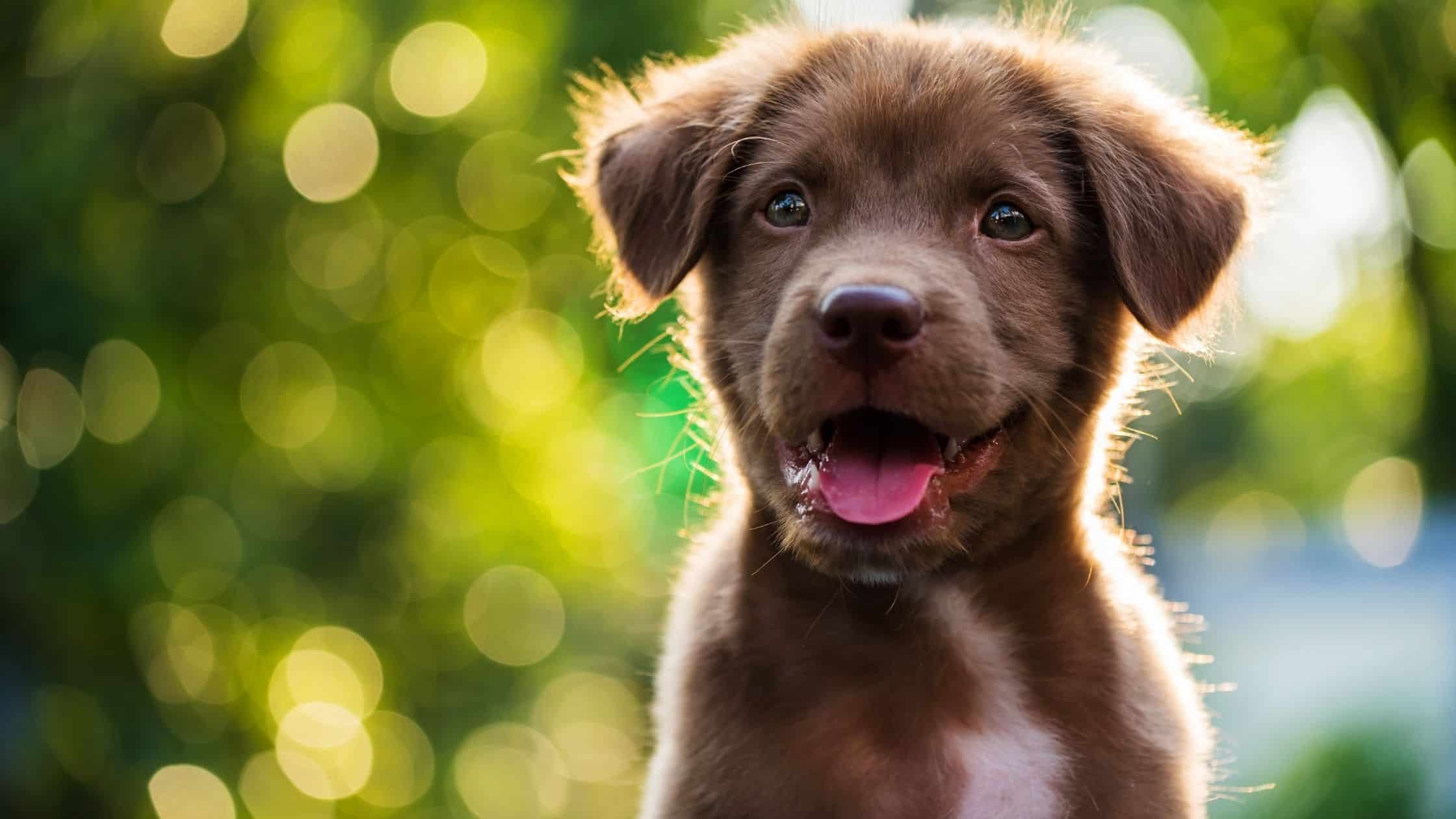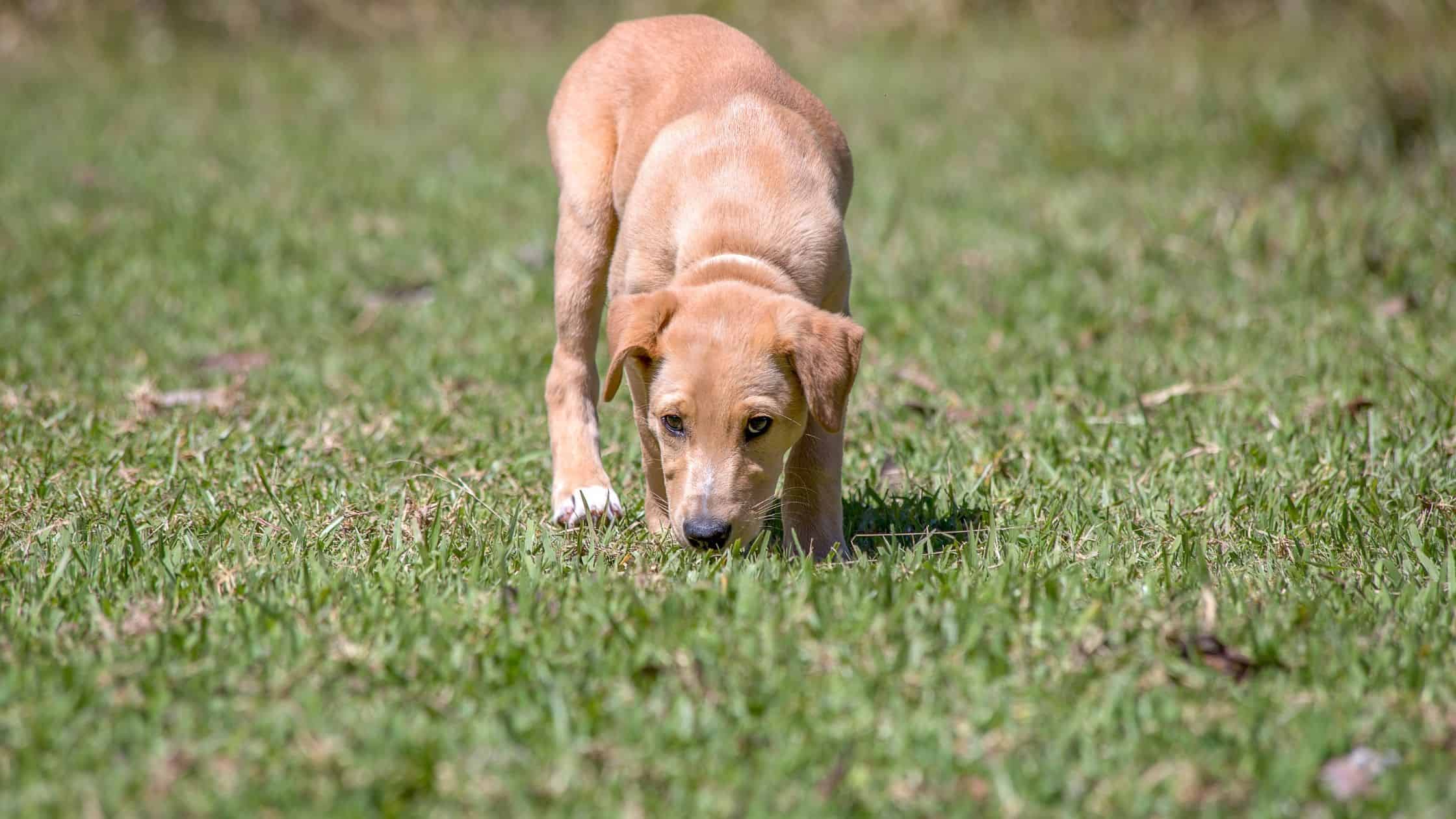Identifying Your Puppy’s Body Language

They may not speak our language in a literal sense, but dogs communicate with us in so many other ways. After all, their ability to connect with humans is part of what makes them such great companions! As a pet owner—especially with a new puppy—it’s your job to pay attention to what your dog’s body language is telling you. Is your pup feeling anxious? Angry? Playful?
Establishing a strong bond with your puppy can help train out unwanted behaviors and teach them new tricks. But how exactly can you tell what your furry companion is thinking? Here’s a breakdown of what each body part is telling you.
Your Puppy’s Expressive Ears
A dog’s ears can give away what they’re thinking more than almost any other body part. The look and shape of the ears vary from breed to breed, with some being more expressive than others. But regardless of the dog, the ears are very expressive.
For instance, the flatter the ears get to their head, the more threatened your puppy feels. Seeing the ears pinned back usually signifies nerves, anxiety, or anger. On the other hand, when the ears get more perky, that means your dog is alert. And when your puppy’s ears get super floppy and relaxed, that means your dog is in a great mood.
The Mouth: Noises, Smiles, and More
When dogs use their voice, it’s pretty easy to figure out what kind of mood they’re in. Growling is a sign of fear or aggression. Whining means they want something—maybe it’s food, attention, or a potty break outside. And barking can mean a few different things. Low, loud barks are your dog’s way of expressing anger or aggression. And short, high-pitched yips mean your puppy is feeling playful.
Your puppy won’t always use their voice, though. A puppy showing their teeth can mean one of two things. First, if the canine teeth are bared in a menacing way, your dog is feeling threatened or showing aggression. Second, if the full set of teeth is showing (almost like a smile), your puppy most likely feels relaxed and happy.

What to Know about Eye Contact with Dogs
Those puppy dog eyes are probably what sold you when it came to bringing this dog home! In addition to looking adorable, the eyes can tell you more about your pup than you’d think. If their eyes are squinty, your dog is feeling extra happy. If they’re wide open—especially if the pupils are dilated—your puppy is feeling alert and maybe even a little aggressive. And if your dog is consistently showing the whites of their eyes, they’re signaling distress.
It’s also important to understand how your puppy feels about eye contact. Regular eye contact is important to establish a relationship with your dog, but don’t try to have a staring contest. Staring for long periods of time—especially without blinking—can signal a threat.
Interpreting Tail Wags
A wagging tail generally signals happiness, but this isn’t always the case! That’s why it’s important to look at all of your puppy’s body cues instead of honing in on just one body part.
To figure out whether your pup’s tail wag comes from a positive or negative emotion, look at the speed and direction of their tail. Fast wags accompanied by total hind-end wiggles usually mean your puppy is in a great mood and ready to play! On the contrary, slow wags can signal discomfort or anger. If your puppy’s tail is clamped over its rear end, pointed down, they’re most likely feeling scared. Your pup feels confident if the tail is perky and pointed toward the ceiling.
What Your Puppy’s Fur Can Tell You
Their fur is one of the things that makes each dog unique. But did you know fur can also be used as a communication tool? If you ever see a strip of hair standing straight up along your puppy’s back, they feel a strong sense of aggression or fear. You might see a dog with its hackles raised when approaching an unfamiliar animal or person.
Posture and Behavior
In addition to studying each of these individual body parts, you can also tell a lot by looking at your dog’s general posture and behavior. Playful behavior, for example, is easy to spot. If your puppy goes down into a “play bow,” just like the “downward dog” yoga position, it means they’re feeling frisky and ready to play!
Is your puppy generally assertive or more laid back? If they’re trying to establish dominance, dogs tend to stand taller and push their chest out, all to make themselves look bigger. Dominant dogs will also lean against people or other animals, sometimes even barreling right into them.
Not all dogs are dominant in nature, though. You may notice your dog crouching down or leaning away from people to demonstrate submission. Their ears may go flat, and they might even offer a paw—think of it like a peace offering!
What are some reasons your dog could be feeling uncomfortable? Your dog might feel threatened in new or unfamiliar situations. They might also feel sick, itchy, or uncomfortable. For example, puppies who are scratching more often than usual may need to be treated for flea infestations.

Aggressive or Just Playing?
Sometimes it can be difficult to tell if your puppy is feeling frisky or hostile. So how do you know when it’s time to remove your pup from the situation?
This is when it’s your responsibility to look at the big picture, taking in multiple cues at once. Are your puppy’s ears floppy, and are they slightly panting? They’re probably just feeling playful! Are their ears flat and teeth bared? They’re probably angry, and you should separate them from other pups or people to prevent a fight.
Knowing whether they’re sad, playful, or scared means you can provide what they need to adapt to any situation or environment. As your relationship grows, you’ll be speaking your puppy’s language in no time!
Know more about your pets’ health. You can read more about pet insurance and dental care here.
